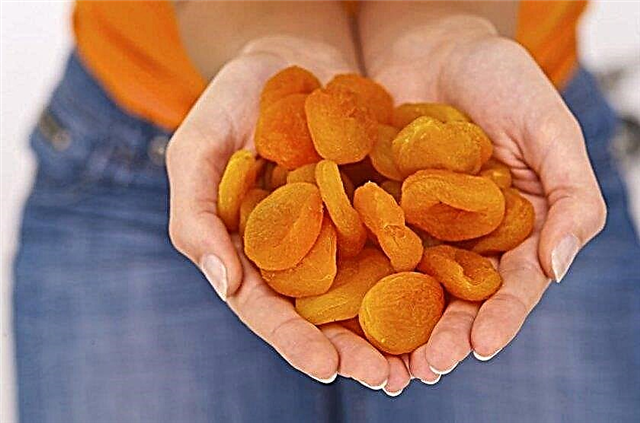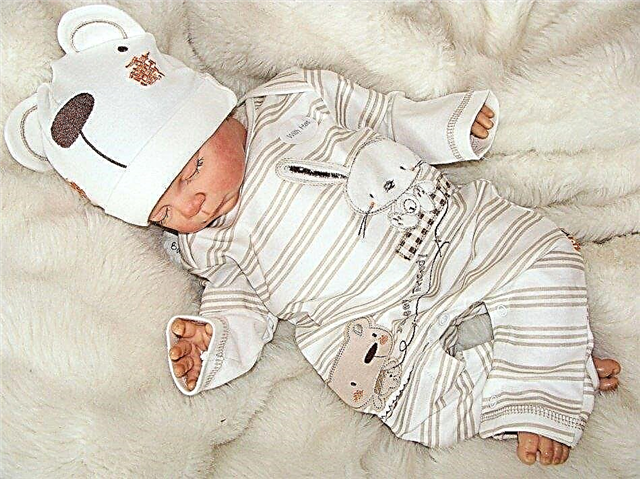An egg is a very healthy and nutritious product, especially for a child. That is why it is often used as complementary food for children under one year old, then included in the standard diet of older babies. However, many parents do not know at what age an egg can be given to a child, how to introduce an egg into a child's complementary food. Also, questions are caused by the amount of product, the cooking process, the frequency of meals. Many moms are afraid that the egg will cause an allergy in the baby. This article will answer these and other relevant questions.

Chicken egg is one of the most common foods that are used to introduce into complementary foods.
Benefits of eggs for baby's nutrition
Chicken and quail eggs are a real storehouse of nutrients. This is especially true for a growing organism, which for the active formation of tissues, organs and systems requires "building material" - protein and a complex of vitamins.
The benefits of chicken eggs for a newborn can hardly be overestimated:
- The product saturates the child's body with animal protein, which includes both nonessential and irreplaceable (that is, not formed in the body) amino acids:
- Thanks to the yolks, the baby receives vitamins, the lack of which can lead to disruption of the growth and functioning of various systems of the young body;
- In addition, the yolk is rich in minerals that have a positive effect on the condition of children's skin, strengthen the immune system, and support the normal functioning of the nervous system;
- The product contains few calories, therefore it is dietary. Due to these properties, eggs can be included in the child's diet regardless of his body weight. The time of meals during the day also does not matter.
Nutritional value
Eggs contain the following beneficial trace elements:
- Vitamins A, B, H, D, PP;
- Phosphorus, calcium, iron, sodium, potassium, cobalt, iodine, copper;
- Enzymes that promote better digestion;
- Fatty acid.
On a note. White is a colorless, odorless mass that sits under the eggshell and holds the yolk inside. Under the influence of high temperature, this substance acquires a white color, this is the protein. Egg components can be easily separated and consumed as stand-alone foods.
Chicken egg white (100 g) contains the following substances:
- Water (87.3 g);
- Protein (11.1 g);
- Fat (0.2 g);
- Carbohydrates (1 g)
The energy value of 100 g of the product is 44 kcal.
The advantage of this product is that it is almost completely digestible - eggs have the highest digestibility (about 98%).
100 g of chicken egg yolk contains:
- Water (50 g.);
- Protein (16.2 g);
- Fat (31.2 g).
The calorie content of the yolk (100 g) is 354 kcal. Compared to protein, this component includes more useful microelements: in addition to vitamins B, K, PP, it also includes beta-carotene, A, E, D.
How to choose the right one
Given that protein is a strong allergen, you should not rush to give it to your baby. For this reason, pediatricians advise starting complementary foods with the yolk. In addition to its harmlessness, the component contains much more nutrients and has a higher nutritional value.
When buying eggs, it is important to pay attention to the following criteria:
- Freshness of the product;
- Seller reputation;
- The integrity of the shell (it is better to refuse products that are chipped or cracked);
- Cleanliness - it is better not to buy eggs that are too clean, since the protective film was removed from them during processing, without it the product will deteriorate faster;
- It is important that the product is not old, stale;
- To check the freshness of an egg, it must be immersed in a container of cold water. If the product is fresh, then it should sink to the bottom (by "age" not older than a week), if not, it should remain on the surface. In the latter case, the product should not be consumed by anyone: neither children nor adults. If the egg has gone under the water, but at the same time did not sink to the bottom, standing upright, it should not be given to the baby.
- Before cooking, the egg must be washed carefully and thoroughly;
- If you plan to give only the yolk, when cleaning from the shell, you must ensure that protein particles do not get into the food.
Another way to test the freshness of a product is to light it up. If the egg has an even color, then it is fresh, and if dark areas are visible on it, it is better to refuse to use it.

Checking the eggs for freshness
Home or industrial
A home product is considered more useful than an industrial product.
Important! A newly laid egg has a matte finish. On the first day, you cannot use it. It is necessary to wait several days until the shell becomes shiny.
Chicken or sawn
The first option is more affordable, therefore it is especially popular with buyers. The composition of the product and its nutritional value do not suffer from this at all. If we compare a chicken egg with a quail, then in the second case, we can note the high cost and richer composition of vitamins and minerals. In addition, quail eggs are not allergens, on the contrary - the protein contained in them (ovomucoid) has a suppressive effect on the manifestation of allergic reactions.
On a note. If a child is allergic to chicken protein, you can feed the baby a quail egg.
Another advantage of quail eggs is the minimal risk of salmonellosis when using this product. Additional features that speak in favor of the latter include:
- For babies, such an egg can be soft-boiled (while chicken is only cooked hard-boiled);
- The process of cooking quail eggs takes less time.

Comparison of the composition of chicken and quail eggs
Which are not allowed
Chicken eggs should be given to babies with caution, as there is a risk of allergies, salmonellosis infection (especially if the product is homemade and has not been subjected to sufficient heat treatment).
To exclude salmonella infection of the baby, it is not allowed to feed the babies with raw eggs. Heat treatment is mandatory and should last at least 5-10 minutes. For the same reason, soft-boiled chicken eggs are also not recommended for babies.
Do not use as complementary foods:
- Turkey eggs (they have less beneficial properties, contain more cholesterol);
- You should not feed babies with duck and goose eggs, as they are more fatty and can provoke allergies. In addition, the likelihood of contracting salmonellosis in this case is much higher than when eating chicken eggs.
When can I introduce into complementary foods
When can a small child be given an egg? You can start feeding your baby with egg yolk no earlier than 7-8 months old.
On a note. If the baby is artificially fed, you can start complementary feeding at an earlier age - from six months. However, you should first consult your doctor.
Here are some rules for introducing a bird's egg into complementary foods:
- Wash the product thoroughly and cook it hard. Chicken eggs are boiled for 5-7 minutes (after boiling), quail eggs - no more than 3 minutes.
- The finished product must be peeled, then the yolk must be separated.
- Take a small part of the yolk (literally crumb) and mix well with a product common for babies, for example, breast milk or formula.
- Food is given before morning or afternoon feeding. Thanks to this, it will be possible to monitor the infant's reaction to complementary foods during the day.
- If no negative consequences have been identified, a full complementary feeding can be started in a couple of days. You need to start with 1/8 of the yolk. The product is mixed with porridge, milk, vegetable puree or soup. If the baby has not accepted the food, it is better to replace it with another dish.
Important! According to the authoritative doctor Komarovsky, before the child reaches 4 months, the question of introducing any complementary foods should not arise in principle.
Yolk
This component can be used both separately and together with other products. The second option for babies will be preferable. The egg must be hard-boiled and let the baby taste a small piece, brought to a puree consistency. If the baby liked the food, and the baby did not have an allergic reaction, you can gradually increase the portions. Thus, by 12 months, the child will be able to consume half the yolk per feeding.

You need to start feeding yolk small
Together with protein
Many parents wonder when it is okay to give their child egg white. The product is offered to a baby after he turns a year. At this age, the risk of allergies is significantly reduced.
It is not necessary to introduce protein separately from the yolk, since the baby by this time has already got used to this component, besides, the taste of pure protein leaves much to be desired (especially children may not like it, because they are more picky about food).
Thus, the introduction of egg white into complementary foods is a transition to complete feeding of the baby with this product.
Important! Allergenicity of the protein component, although to a lesser extent, is still relevant. Therefore, you should not give up some precautions: first, you should give a small amount of protein, if the reaction is positive, you can gradually increase the single portions, while continuing to observe the crumbs.
How to cook eggs properly
Before cooking, eggs must be thoroughly washed and heat treated to eliminate the risk of salmonellosis. It is necessary to cook hard-boiled. You can diversify the consistency (give your baby a soft-boiled egg, add to baked goods, make scrambled eggs) only after a year. Omelet and soufflé are allowed to be given in infancy.
How much to cook
A chicken egg is cooked about 5-7 minutes after boiling, for a quail egg - 2-3 minutes is enough.
On a note. Do not overuse the cooking process. Excessive heat treatment will spoil the quality and appearance of the product.
Steam omelet
To cook a steamed omelet for your child, you will need:
- One egg;
- Some milk.
Beat the egg, add milk to it and stir thoroughly. To prepare the dish, you can use a jar of baby food, greasing it from the inside with butter. The container is filled with the resulting mass and placed in a double boiler. The omelet can be given several times a week, every 2-3 days.
Important! If you plan to add homemade milk to the dish, it must first be boiled. Sauces and spices are completely excluded (only a little salt is allowed).

Steam omelet
Souffle
To prepare a soufflé from the liver (which is also an important product in the baby's diet), you will need:
- The main ingredient is 100 g;
- A small amount of white bread;
- Egg - 1 pc.
All components must be crushed until a homogeneous mass is obtained. At the same time, whip the protein separately. Then the resulting ingredients are mixed and placed in a double boiler.
Complementary feeding rates by month
The rates of yolk complementary foods for months to a year look like this:
- 1/8 of the product is given to a child at the age of 7-8 months;
- Fourth part at 9-10 months;
- At 11-12 months, you can increase the portion to half the yolk;
- One year old babies can consume a whole yolk in one feeding.
The specified standards only apply to chicken eggs. Quail eggs are much smaller in size, so the whole yolk can be fed one month after the introduction of a new product into complementary foods. In this case, you can start with 1/4 (not 1/8).
How often to give
Daily use of the product is possible only when the baby is 2 years old. Prior to this, the egg should be present in the child's menu no more than 3 times a week.
Number
In the first months after the introduction of complementary foods, a single portion of the boiled product is an eighth of the yolk, then the volume increases to a fourth, and then to half.
What can be combined with
At first, the product is mixed with breast milk (if the baby is on HB) or an artificial formula. Also, the egg can be added to porridge, soup, fruit puree. Omelet and soufflé are prepared for older children. One-year-old babies can eat soft-boiled eggs, scrambled eggs and other dishes that require this product to cook.
Possible Power Problems
When eating egg white, children often experience an allergic reaction. In addition, chicken eggs are dangerous because through them you can contract salmonellosis.
Signs of allergies
A baby's protein allergy is characterized by the following symptoms:
- The occurrence of coughing, sneezing, nasal congestion;
- Skin rashes;
- Dry mucous membranes;
- Quincke's edema;
- Stomach ache;
- Stool disorder;
- Nausea, vomiting;
- Suffocation.
Protein is a fairly heavy product for newborns. Egg yolk is less likely to cause allergies, while it contains more useful components necessary for the normal growth and development of the baby.
Important to remember! The introduction of the product into complementary foods should be carried out in a timely manner; frequent feeding is not encouraged.



